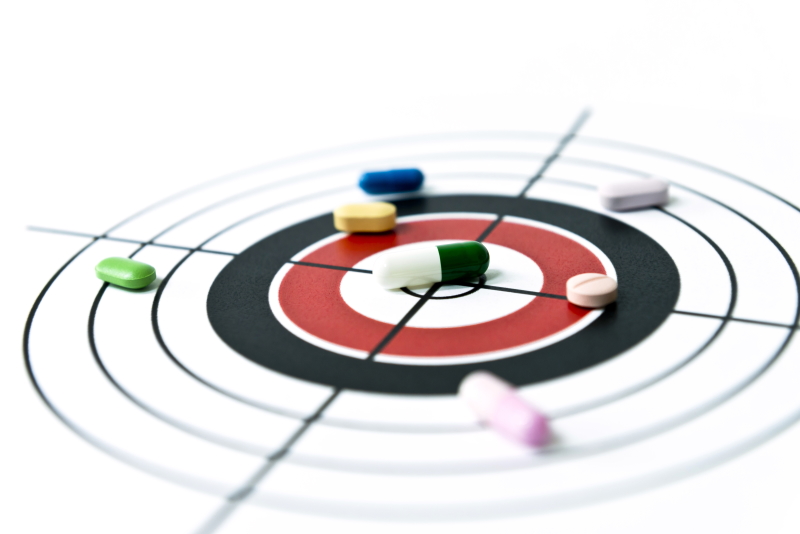qNMR Purity Recipe Book (1 – Sample Preparation)
The technique requires that you co-dissolve your analyte together with an appropriate reference material. The NMR signal for this must be collected under quite careful conditions if the experiment is to be quantitative. Finally, the spectrum must be processed and relevant data extracted to determine the overall analyte purity. I will illustrate the latter task using Mestrenova software.
Disclaimer
This article is intended to help Mestrelab customers get the best results from “purity” determinations using NMR. It is intended solely as a guide to doing this experiment correctly and does not take away your responsibility to show that your procedures are effective, and give the correct result in a robust way.
Sample preparation
Choosing the solvent, and dissolution
It is very important to first determine which NMR (deuterated) solvent fully dissolves your compound. Try very hard to use a single solvent and it should fully dissolves your sample without heating, adding acid, etc. You may need to inspect the liquid with good lighting and a magnifying glass to fully convince yourself that the sample satisfies this criterion, and that it has not, e.g., formed a colloid. It is a good idea to use a vortex mixer to be certain that the (capped!) vial with a solution of your sample has been thoroughly mixed.
Choosing a Reference Standard
The criteria for a suitable internal reference standard have been well documented [1] , and you will need to be satisfied that this compound:
- Is soluble
- Has known purity
- Has one or more signals that do not overlap with a solute signal
Weighing the samples
Depending on the accuracy you need to achieve, you must decide whether or not you need to do replicates, and how many. Three replicates would be common if this is necessary.
How you weigh your samples is probably different for everyone. You can weigh both materials into the same vial, but adjusting the mass of the second compound is then impossible. If you weigh each sample into separate vials then you must be sure that the full contents are quantitatively transferred to the other sample. Because I am more of an NMR spectroscopist than an analyst, I would favour the first method, and carefully add the second compound. Remember: never return material to the stock bottle!
How much should you weigh out?
This question may be answered for you if you only have a little material, but 10-20 mg would be a sensible amount if you have it. You don’t want so little that the mass is uncertain, and not so much that dissolution becomes a concern. Recovering the material is not impossible, but would require a separation.
You should also aim to weigh roughly equimolar amounts of both analyte and reference material. This can be roughly judged by their relative molecular masses. If your analyte has 3X the molecular mass of the reference standard then you should try to weigh about these in a 3:1 ratio, approximately.
The balance, and weighing the samples
It is generally agreed that a 5-figure balance (weighing to 0.01mg) with a sensible weighing capacity is needed for this process. You will always have practical considerations for weighing: draught exclusion and vibration isolation. And, depending on your typical analytes, a safety assessment may be a good idea to determine the safest location of the balance, and necessary safety considerations – fume hoods, Astec cabinets, etc. Decide whether or not you need the masses printed/logged.
After the samples have been weighed they should be kept in a capped glass container until the solvent is added.
Tip
It really is worthwhile setting enough time aside to doing the weighing task well and without disruption.
Sample dissolution
The object is to be certain that all the analyte and reference material has dissolved and forms a single, true solution.
Use a good grade solvent, preferably with the TMS reference material already added. Having this signal in your spectrum is useful as it also allows you to check the overall quality of the NMR spectra your instrument is generating
NMR sample tube preparation
Remember that you want the best quality NMR spectrum you and your spectrometer can consistently deliver. You may need to determine empirically the quality of NMR tube that meets this need. The usual rules apply:
- The tube must be scrupulously cleaned and dried [2]
- The tube must not have chips at the opening
When transferring your solution of analyte and reference material to the NMR tube, please be sure you have a sensible liquid column height. If you use too little the spectrometer cannot shim the sample properly, and the same can be true of very “long” samples. As a guide, use ~0.6mL for a 5mm tube. The NMR tube should be capped to limit atmospheric water uptake and solvent evaporation.
If you choose to weigh the analyte and reference material into separate vessels then you need to ensure a quantitative transfer of one solution to the other.
- http://www.sigmaaldrich.com/content/dam/sigma-aldrich/docs/Fluka/General_Information/1/analytix_qnmr.pdf
- Do not dry tubes in too hot an oven as this can distort the tube! An oven temperature of 50-60°C should suffice.


